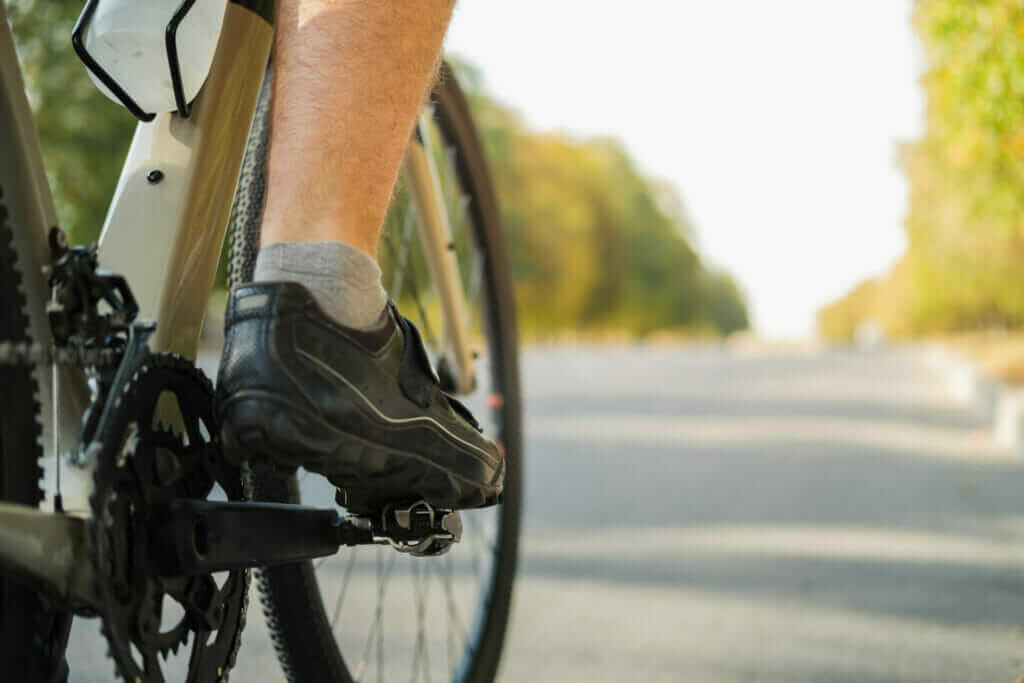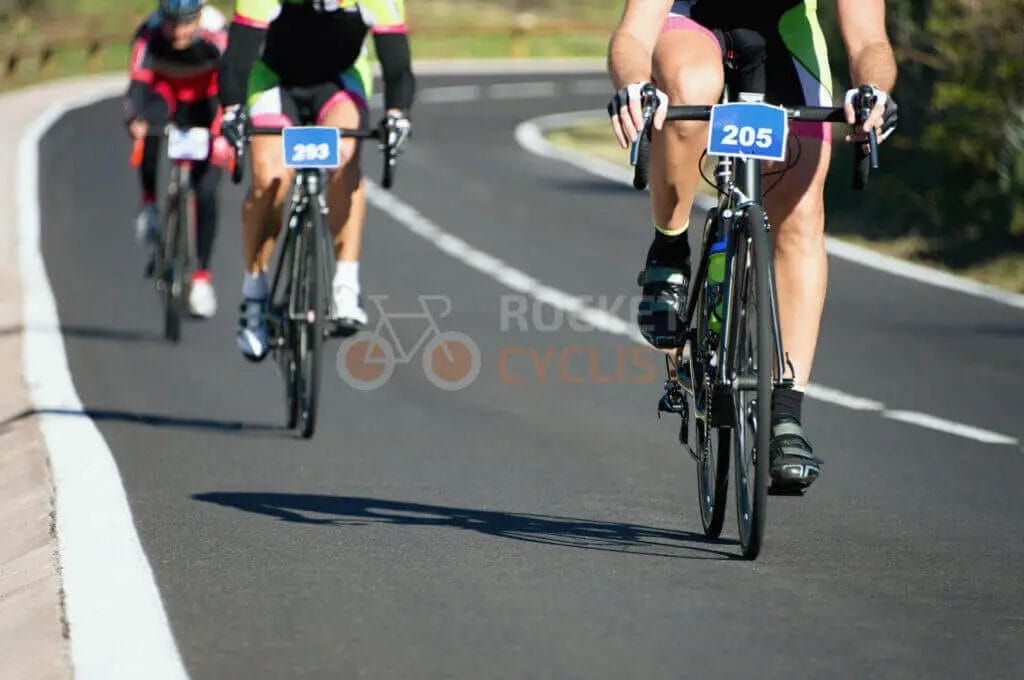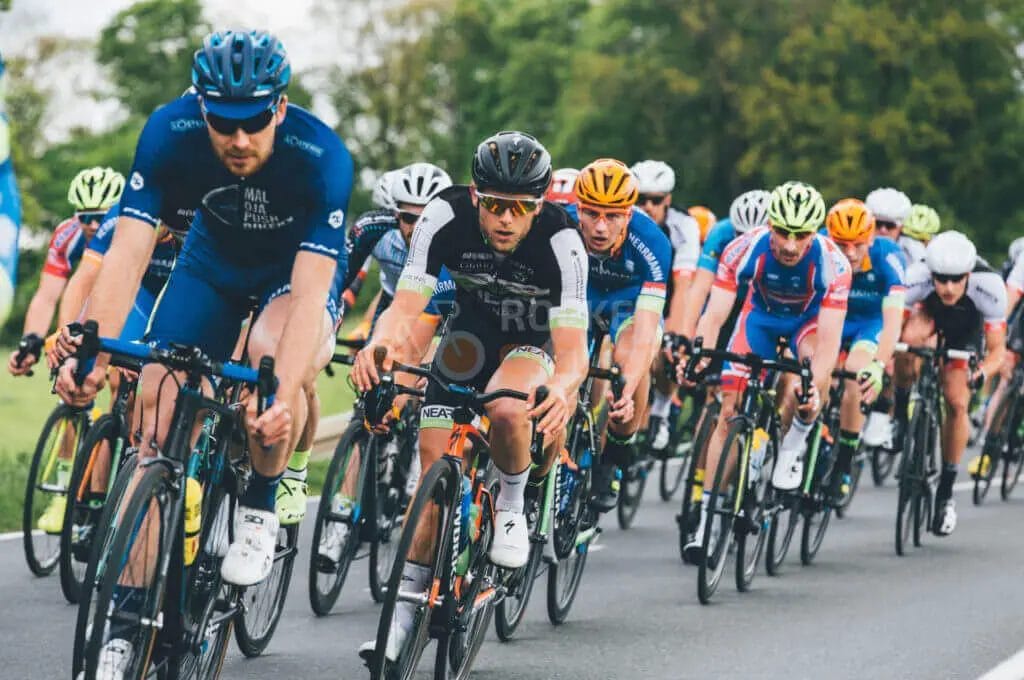Last Updated on March 1, 2024 by Vinson Lozano

Overview of clipless pedals and their benefits
- Enhanced Efficiency: With clipless pedals, you enjoy a significant increase in pedaling efficiency. The secure attachment allows for better power transfer from your legs to the bike, giving you a smoother and faster ride.
- Improved Control: You gain superior bike control since your feet are firmly attached to the pedals. This translates into better handling, especially during technical sections and tight turns.
- Consistent Foot Position: These pedals keep your feet in the optimal position at all times. Forget about your foot slipping off — you’re clipped in and ready to pedal effectively.
- Advanced Riding Techniques: Master advanced cycling maneuvers like bunny hops and sprints more easily, as the clipped-in position offers more stability and leverage.
Common misconceptions about clipless pedals

- Difficulty of Use: Many think clipless pedals are difficult to use, but with practice, clipping in and out becomes second nature.
- Safety Concerns: The fear of not being able to unclip fast enough is common but unfounded. Modern clipless systems offer adjustable tension for easy release.
- Comfort Issues: There’s a belief that clipless pedals are uncomfortable, however, choosing the right shoes and pedals combination should alleviate any discomfort.
- Less necessary for casual riders: While some assume clipless pedals are only for pros or serious riders, even casual cyclists can benefit from the efficiency and control they provide.
Remember that like any cycling equipment, there is a learning curve, but the benefits you reap with clipless pedals are well worth the initial effort.
Increased Pedaling Efficiency

Improved power transfer with clipless pedals
You’ll experience a noticeable difference in power transfer when you switch to clipless pedals. This is because they enable a direct link between your legs and your bike. This connection means every bit of energy you put into pedaling propels you forward without any loss through slippage. Initially, you might find clipping in and out challenging, but give it some time, and it will soon become an automatic motion for you.
Reduced energy loss through pedal strokes
With traditional pedals, there’s a chance your foot may slip, particularly on wet days or during intense rides. This not only hinders your pedaling efficiency but can also cause inconsistent strokes. Clipless pedals, on the other hand, keep your feet anchored in place. This stability allows you to maintain a consistent cycling rhythm, which is especially beneficial when you’re accelerating or climbing. As you become accustomed to your clipless system, you’ll also find that the upward pull on the pedal stroke contributes to your momentum, further reducing energy loss.
Embrace the learning curve and practice regularly. It’s crucial to adjust the tension settings on your pedals to match your comfort level when disengaging. And remember, appropriate cycling shoes that complement your clipless pedals will significantly enhance your riding experience.
Enhanced Bike Control

Increased stability and control with clipless pedals
When you switch to clipless pedals, you’ll gain unprecedented stability and control over your bike. This system holds your foot securely, reducing the likelihood of it slipping off the pedal during critical moments. Because you’re firmly attached to the bike, you can maneuver with greater confidence, knowing that your feet won’t unexpectedly detach. With clipless pedals, you’re able to apply force throughout the entire pedal stroke – not just on the downstroke – which means you can maintain better control while pedaling through rough patches or executing sharp turns.
Improved handling on technical terrain
The benefits of clipless pedals become even more apparent when you’re riding on technical terrain. With your feet securely clipped in, you’ll find it easier to navigate rocky trails, tight switchbacks, or quick descents. You can lift your bike over obstacles without worrying about your feet coming off the pedals. Moreover, this connection allows you to use your legs to help absorb shocks and bumps, giving you a smoother ride and greater agility. Make sure to practice on easier trails first and gradually progress to more challenging terrains as you get comfortable with the clipless system.
Remember to keep your movements natural and avoid fixating on your feet. Focus on the trail ahead, anticipate your next move, and use your legs to guide your bike fluidly. With practice, clipless pedals can significantly improve your bike handling skills, making your rides safer and more enjoyable.
Injury Prevention

Reduced risk of foot slippage and injuries
- Clipless pedals reduce the chance of your foot slipping off the pedal, minimizing potential crash risks.
- Securely connected to your bike, you lower the likelihood of overextension injuries during sudden stops.
- By improving your overall stability on the bike, you also lower the risk of strains or sprains resulting from unexpected movements.
- Gain peace of mind as the secure connection provides a consistent foot position, which is crucial for avoiding missteps and the consequent injuries.
Protection against knee and ankle strain
- The design of clipless pedals ensures proper alignment of your feet, helping to prevent awkward rotations that can lead to knee and ankle strain.
- Consistent pedal strokes fostered by the clipless system contribute to even muscle engagement, thereby protecting your joints from overuse injuries.
- The ability to pull up on the pedals while clipped in promotes a balanced development of leg muscles, offering additional support for knee and ankle joints.
- Customizable cleat positioning is a feature of many clipless pedal systems, allowing you to find the most ergonomic foot placement for your riding style.
Remember, while clipless pedals offer numerous advantages for bike control and injury prevention, ensure you invest time in learning how to use them properly and safely. Always wear appropriate cycling shoes and gear, and make incremental adjustments to your setup as you become more accustomed to the new pedaling style.
Better Pedaling Technique
Encourages proper pedaling technique and form
- With clipless pedals, you’ll find yourself adopting a more structured pedaling technique since your feet are in a fixed position.
- You are encouraged to use a circular pedaling motion, which is more efficient and puts less stress on your knees.
- This secure and stable connection helps maintain correct leg and foot alignment while riding, which is essential for a proper pedaling form.
- As you develop muscle memory from this repetitive proper motion, you’ll be less likely to default to inefficient and potentially harmful techniques.
Improved muscle engagement and efficiency
- Clipless pedals allow you to engage more muscles throughout the pedal stroke, specifically during the upstroke where you can pull the pedal up, not just push down.
- Greater muscle engagement translates into increased pedal efficiency and power output.
- By distributing the workload across a broader range of muscles, you’re also reducing the risk of fatiguing any single muscle group too quickly.
- The continuous and balanced use of different leg muscles reduces lactic acid build-up, enhancing your endurance and performance on the bike.
Remember, mastering the technique of using clipless pedals takes practice and patience. Start with short rides and gradually increase the duration as you get more comfortable. Adjust the tension on your pedals to make clipping in and out easier as you familiarize yourself with the motion. Practice in a safe environment until clipping and unclipping become second nature to you.
Types of Clipless Pedals
Overview of different types of clipless pedals
- Road Pedals – These have a larger cleat, offering a wider platform for improved foot-pedal stability and increased power transfer for road cycling.
- Mountain Bike (MTB) Pedals – Built for tough terrains, these pedals and their corresponding cleats are designed to shed mud and debris easily and typically offer dual-sided entry.
- Hybrid Pedals – Ideal for beginners or those who want versatility. One side of the pedal is flat, while the other has a clip-in mechanism.
Comparison of pedal systems and cleat options
| Pedal Type | Cleat Design | Benefits | Considerations | ||||||||
|---|---|---|---|---|---|---|---|---|---|---|---|
| Road Pedals | Larger Surface Area | Maximized Power Transfer | Walking Difficulty | MTB Pedals | Smaller, Recessed | Multifunctional | Less Power Transfer | Hybrid Pedals | Optional | Versatility & Ease of Use | Potentially Less Secure |
You’ll find clipless pedals in various styles and designs, each suited for specific types of riding. Road bike pedals typically feature a three-hole cleat system, emphasizing stability and efficiency on tarmac. In comparison, mountain bike pedals often support a two-hole cleat system geared for the unpredictable nature of trails and provide easier walking. Hybrid pedals offer a middle ground, with a flat platform on one side and the ability to clip in on the other. Consider your cycling needs, comfort level with engaging and disengaging from the pedals, and whether you walk frequently during your rides when choosing the right clipless pedal system.
Tips for Using Clipless Pedals
Proper installation and adjustment of cleats
- Ensure Compatibility: Verify that your cleats and shoes are compatible with your clipless pedals.
- Cleat Positioning: Position cleats according to the ball of your foot for optimal efficiency and comfort.
- Tighten Securely: Use a torque wrench to tighten cleats to the recommended settings to prevent them from moving or becoming loose.
- Test and Adjust: After initial installation, ride a short distance to test the setup. Make adjustments as necessary to avoid discomfort or injury.
Techniques for clipping in and out safely
- Practice: Learn clipping in and out while your bike is stationary, perhaps against a wall or on a trainer.
- Entry Angle: When clipping in, ensure your cleat engages at the correct angle—engage the nose of the cleat, then press down with your heel.
- Quick Release: For disengagement, twist your heel outward confidently; hesitation can lead to losing balance.
- Pedal Tension: Adjust pedal tension to make clipping in and out easier until you are comfortable with the mechanism.
Remember, mastering the use of clipless pedals takes time and patience. Start with easier settings and practice on safe grounds. As you become more confident, increase the tension for a more secure ride. Listen to your body and adjust cleat positioning if you experience any discomfort, and always prioritize your safety when learning to use these pedals.
Potential Drawbacks
Learning curve and difficulty in mastering clipless pedals
- Time-Consuming: You’ll need to invest time to get used to the mechanism of clipping in and out smoothly.
- Co-ordination: It requires coordinating your actions, which might be challenging if you’re accustomed to flat pedals.
- Muscle Memory: Building the muscle memory for the twist-out motion is crucial and can take several rides to develop.
- Focus: Initially, your focus might shift from traffic or obstacles to your feet, potentially compromising your attention to the road.
Possibility of falls and crashes
- Stopping: When you come to a stop, if you forget to unclip, you could lose balance and fall over.
- Panic Stops: During sudden stops, the additional step of unclipping could delay foot release, leading to falls.
- Technical Issues: If your cleats or pedals are not maintained well, they can malfunction, causing unexpected incidents.
- Sticky Situations: In conditions such as mud or snow, clipless pedals can get clogged, making it difficult to clip in or out.
Remember that practice is essential. You should first try out clipless pedals in a controlled environment. Always check your equipment before a ride, and maintain your pedals and cleats to ensure they function correctly. While the learning process might be frustrating at times, the efficiency gains and improved bike handling are often considered worth the initial struggle.
Potential Drawbacks
Learning curve and difficulty in mastering clipless pedals
- Time-Consuming: You’ll need to invest time to get used to the mechanism of clipping in and out smoothly.
- Co-ordination: It requires coordinating your actions, which might be challenging if you’re accustomed to flat pedals.
- Muscle Memory: Building the muscle memory for the twist-out motion is crucial and can take several rides to develop.
- Focus: Initially, your focus might shift from traffic or obstacles to your feet, potentially compromising your attention to the road.
Possibility of falls and crashes
- Stopping: When you come to a stop, if you forget to unclip, you could lose balance and fall over.
- Panic Stops: During sudden stops, the additional step of unclipping could delay foot release, leading to falls.
- Technical Issues: If your cleats or pedals are not maintained well, they can malfunction, causing unexpected incidents.
- Sticky Situations: In conditions such as mud or snow, clipless pedals can get clogged, making it difficult to clip in or out.
Remember that practice is essential. You should first try out clipless pedals in a controlled environment. Always check your equipment before a ride, and maintain your pedals and cleats to ensure they function correctly. While the learning process might be frustrating at times, the efficiency gains and improved bike handling are often considered worth the initial struggle.
Conclusion
Considerations for choosing clipless pedals
As you contemplate the shift to clipless pedals, weigh the potential efficiency and bike handling benefits against the learning curve. You should:
- Embrace the likelihood of a few tumbles during your learning phase.
- Accept that mastering the in-and-out movement is a must to prevent the falls associated with misuse.
- Dedicate a portion of your riding time to practice without distractions.
Final thoughts on whether they are worth it
Clipless pedals often bring a significant improvement to your ride. Consider the following final points:
- They ensure better transfer of energy from your legs to the bike.
- They secure your feet in an optimal position for both comfort and pedaling efficiency.
- Though intimidating at first, many riders find them indispensable after the initial adaptation period.
Weigh these advantages against the learning curve and moments of potential frustration and inconvenience to determine if clipless pedals are the right choice for your cycling journey.


